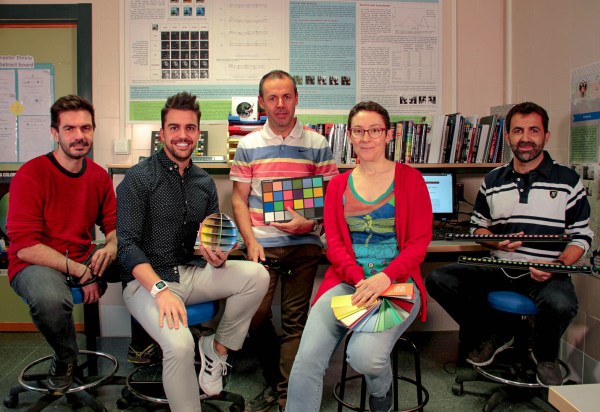
This work is part of a strand of research being undertaken by the Department of Optics of the University of Granada (UGR) in Spain to analyse the effectiveness of various aids marketed as ostensibly ‘improving’ colour vision among colour-blind people
In 2018 and 2019, the research team demonstrated the ineffectiveness of two such products: EnChroma’s Cx-65 glasses and VINO’s 02 Amp Oxy-Iso glasses. Neither was found to improve the colour vision of colour-blind people.
In Spain alone there are almost 2 million colour-blind people (one in 12 men and one in 200 women) who struggle to discern the different colours. Due to this reduced capacity to distinguish certain colours, they experience a range of day-to-day difficulties and it also impedes them from applying for jobs in some professions—for example, they are excluded from being train drivers, pilots, police officers, fire-fighters, and so on.
Five scientists from the University of Granada (UGR), in their on-going research into this issue, have computationally modelled almost 100,000 different colour filters (rather than testing filters that are already marketed by various companies, such as EnChroma or VINO, which sell ‘glasses for the colour-blind’). Using these computer models, they have studied which of the filters would increase the number of colours that colour-blind people could perceive and what their effect would be on the results of two tests that are commonly used in diagnosing colour-blindness (the Ishihara test and the Farnsworth-Munsell 100 Hue test).
Among the filters they modelled, the scientists also included lenses with a colour filter sold by the aforementioned companies VINO and EnChroma. These lenses have received considerable media attention in recent years, with viral videos that have flooded social networks showing colour-blind people overwhelmed with emotion when trying on such glasses for the first time.
The findings of the research showed that, although certain filters do increase the number of discernible colours, the improvement is negligible and the increase does not enable colour-blind people to perceive the same range of colours as normal subjects. It was also found that none of these filters would pass the Ishihara test or the Farnsworth-Munsell 100 Hue test, the latter being very reliable in assessing colour vision in humans.
These results support the hypothesis that, despite the apparent success of the marketing campaigns implemented by the companies that sell this type of glasses, these filters will never enable colour-blind people to enjoy a similar degree of perception in their vision to that of individuals with normal colour perception.
The results have recently been published in the scientific journal SENSORS. The five doctors who contributed to the article are all from the Department of Optics of the Faculty of Sciences at the University of Granada: Miguel Ángel Martínez Domingo, Luis Gómez Robledo, Eva Valero Benito, Rafael Huertas Roa, and Javier Hernández Andrés.
Bibliography:
Miguel A. Martínez-Domingo, Eva M. Valero, Luis Gómez-Robledo, Rafael Huertas, and Javier Hernández-Andrés (2020), ‘Spectral filter selection for increasing chromatic diversity in CVD subjects’, Sensors, 20(7), 2023. Online: https://doi.org/10.3390/s20072023
Image captions:


Media enquiries:
Miguel Ángel Martínez Domingo
Department of Optics, Faculty of Science, University of Granada
Email: @email



